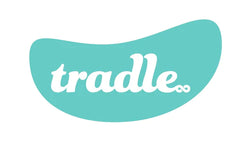
Written by Teghan Acres
The first time that I truly understood the vastness of the clothing donation industry was when I was working as an intern in Kampala, Uganda a few years ago. Walking home from the grocery store, something caught my eye. It was a local boy wearing a Timbits t-shirt. I immediately recognized the logo for the Tim Horton's sponsored kid’s sports program. I had seen second-hand clothing for sale at markets around the city, but never an item that I felt so connected to. It made me think, how did this specific shirt get from my home country to the capital city of Uganda?
After doing some extensive research into the global textile industry, I now know that about 45% of clothing donations in North America are exported to for-profit clothing resellers in developing countries [1]. In Uganda, 81% of all clothing purchases are preloved items. By 2023, it is estimated that the world’s resale apparel economy will be worth $51 billion [2].
The Timbits shirt that I saw in Uganda was likely dropped off at a thrift store or clothing donation bin somewhere in North America, from which the donor thought it would be redistributed to another child in their community. However, only 25% of clothing donated to thrift and charity shops is actually sold there. At Salvation Army locations in Canada, clothing is given 4 weeks to sell before being replaced and sent to its next destination [1]. Unwanted garments are then sent in one of two directions.
Lower quality pieces are allocated for commercial and industrial use as car insulation, carpet
padding and wiping cloths, which makes up the final destination for 40% of donated clothing [1]. (P.S. the clothing you drop off in those recycling bins at H&M isn’t remade into new t-shirts and jeans, it is most likely to end up as car-seat filling or in the landfill). Less than 1% of all clothing is actually recycled to make new clothing [1].
Better quality items (which were still deemed unsellable by their original donation point) are sold to clothing graders who sort and bundle the items for shipment to markets in developing countries. This used clothing isn’t always welcomed. In 2015, the East African Community (EAC), comprised of Burundi, Kenya, Rwanda, Tanzania and Uganda, announced a ban on second-hand imports to protect their domestic textile industries. Only Rwanda successfully enacted the ban. The United States used trade agreements with the other nations to pressure them to drop the ban. While it is true that local textile industries in these countries have been harmed by the second-hand market, it is now a steady source of income for many families. Resellers in Nigeria are protesting their government’s ban on the import of these goods, as they have not adequately supported the textile industry that the ban is meant to protect [5]. This is a complicated industry with many differing opinions. The most important question to ask here is, “how did we accumulate so much clothing that there is now a multibillion dollar industry based on the resale of it?”.

Secondary Materials and Recycled Textiles Association estimates of their second-hand clothing supply chain
Credit: CBC
The sad truth of this whole story is that this system only describes the fate of 15% of all unwanted clothing. The other 85% is disposed of by being sent directly to the landfill [4]. The real message here is that we need to buy less. We need to buy second-hand. We need to buy high-quality. We need to buy beyond trends. We need to buy with the entire lifecycle of the piece of clothing in mind.

Example of what a circular textile economy may look like
Credit: Ethical Fashion
I don’t want to leave you with the impression that donating clothes is bad, but you should remember that it is not an excuse for continued clothing consumption, and your donated items are often not used in the way you intend them to be. We can’t think of donating as the solution to our textile waste problem. The solution is a system where clothes are reused over and over again, not down-cycled or sent to the landfill. Tradle wants to do their part to reduce textile waste by keeping it in the economy for years to come, and close the loop on the fashion industry.
Participate in Tradle’s new clothing donation program. We will pick up, clean, sort and redistribute the clothing to other families in the Tradle community. Learn how to participate here.
______________
Sources:
[1] The Truth About Your Clothing Donations | Not Just A Label
[2] What Really Happens to the Clothes you Donate | Macleans
[3] Here’s where your donated clothing really ends up | CBC
[4] What really happens to old clothes dropped in those in-store recycling bins | CBC
[5] Second-Hand clothing may be a threat to Africa’s textile industry, but it’s not all bad | Eco Warrior Princess

